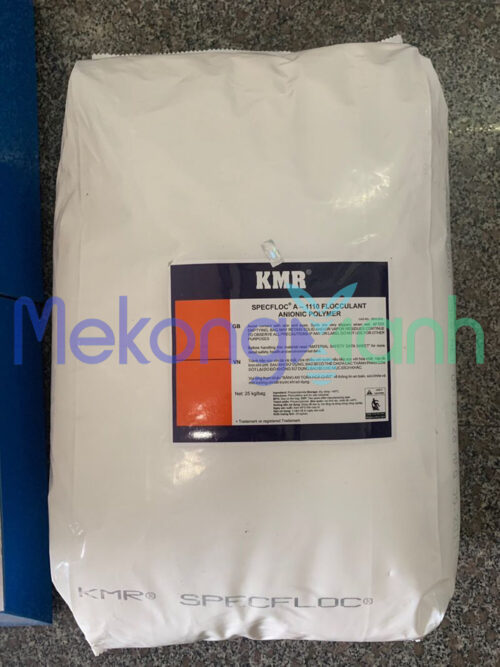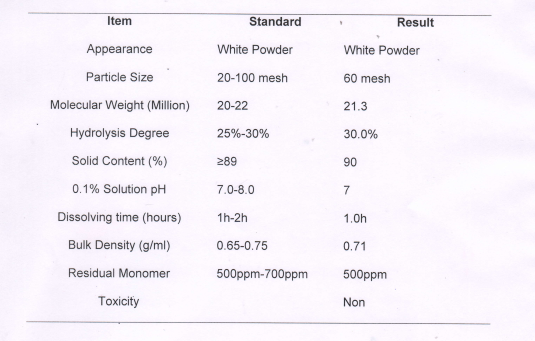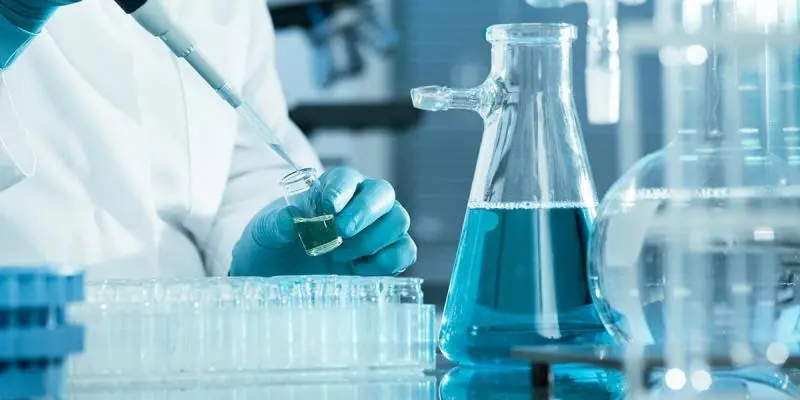PRODUCT
Anionic Polymer sedimentation auxiliaries - PAM
Name: Polyacrylamide Anion or PAM
Brand: KMR – UK
Specification: 25kg bag
Nowadays, Chemical Anionic Polymer It is widely used in daily life and in industry. So what is a polymer? Why is it so commonly used? This article will provide information to help you find the answer. Let's see it now!
What are polymer chemicals?
Polymer chemicals is made up of repeating units and is a useful chemical. It repeats units made of carbon, hydrogen and possibly oxygen, nitrogen, etc. Units are chemically linked or paired or overlap.
Polymer chemicals Also known as Anionic Polyacrylamide or chemical pam. With the use of sedimentation aid, it is also called a sedimentation aid. Commonly used in wastewater treatment industry. Specifically, this substance is used in the physico-chemical treatment process to increase the flocculation ability of Thai water. Therefore, thanks to the polymer, the flocs will clump larger. This increases the deposition efficiency and the water is treated more efficiently.

Anion A1110 . Polymer Product Information
– Product name: Polymer Anion A1110
– Other names: Anionic Polyacrylamide, PAM, sedimentation aid
- Product Type: environmental treatment chemicals
– Specification: 25kg/bag
– Origin: Great Britain
– Appearance: white powder
Polymers Anion A1110 is polymer negative, have different molecular weights and electrical charges. Acts effectively as coagulation aids or settling aids in liquid-solid separation. … The colloidal particles are adsorbed by polymer, no longer sustainable, call to be coagulation process.

>> See more: Cationic Polymer
>> See more: Products

Application of Polymer Anion
Polymer Chemicals also known as chemical pam plays a role in settling free particles in wastewater through flocculation and flocculation. Chemical pam will bond with water to form insoluble hydroxide. The precipitation process usually has meshes that keep the colloidal particles small and the precipitation rate is fast. Thereby, increasing the size of the larger sediment particles and helping to settle the sediment better.
Polymer chemicals Widely used in industrial wastewater treatment industry, domestic wastewater. Chemical pam will participate in the separation of liquids and solids in wastewater and sludge. In addition, this substance is also used to treat wastewater from petrochemical, paper, textile, food, and pharmaceutical industries. And popular applications in the mining process of minerals such as lead, zinc, gold, ...
– Anion polymer water treatment chemicals have the role of supporting suspended particles in wastewater through the process of flocculation, flocculation and sedimentation. In addition, the PAM sedimentation aid also forms bonds with water to form insoluble hydroxides. During the precipitation process, meshes will appear that hold the small colloidal particles by bonding together and causing rapid precipitation, increasing the size of larger particles for better settling.
– When treating domestic wastewater, Polymer Anion has the ability to be applied in liquid-solid separation processes including wastewater treatment, activated sludge and digested sludge…
Polymer A1110 is also used to treat wastewater in petrochemical industries, paper industries, textiles, electroplating, food and pharmaceutical industries.

Characteristics of polymer chemicals
Polymer chemicals It is a white, odorless solid that exists in the form of crystalline granules. Moreover, this substance can easily dissolve in water and has strong hygroscopic properties.
The separation process is based on the charge neutralization mechanism between the free particles in the wastewater and the polymer molecules. Analyzed into 3 groups according to the charge mark and with different functions:
- Cationic polymer soluble in positively charged molecular solutions is used for sludge treatment
- Anionic polymer soluble in solution of electronegative molecules used in wastewater flocculation
- Amphibian polymers are soluble in dipole molecular solutions

Principle of use of Polymer Anion
Anionic polymers are used in the following solid-liquid separation processes:
- Mechanical decomposition – treatment of inorganic sludge to increase efficiency, recover solids and improve quality
- Settling capacity – improved flocculation makes settling rate faster
- Coagulation – helps settle inorganic molecules and coagulate organic particles
- Water purification – improves water quality by reducing suspended solids in water
- Dissolves air bubbles – resulting in clearer flow and great efficiency
- Filtration – improves filtered water quality and plant capacity
- Remove phosphate in wastewater
Here are some of the main applications. Many benefits can be obtained when applying these products to any solid-liquid separation process.

How to use PAM Polymer Anion deposition auxiliaries
- Chemical Polymer A1110 is dissolved in water in the appropriate ratio until completely dissolved, PAM will dissolve faster if mixed in warm water.
– The ideal rate of using Anionic Polymer in water and ensuring effective treatment quality is 0.01% – 0.1%. Add about 100ppm - 200ppm of Polymer Anion sedimentation aid to the wastewater to be treated.
However, this ratio will be changed invariably, depending on the quality of the input water. Need to define different environment to choose industrial chemicals Polymer Anion for the best fit.

Advantages of PAM Polymer Anion chemicals in wastewater treatment
- The versatility of Polymer Anion does not change the pH and salt concentration in water, so PAM is widely used.
- When used, Polymer Anion is very soluble in water, effective in removing solids.
- Use with low dosage, help save chemicals, save costs and still apply effectively.
- Eliminate or reduce the use of inorganic salts.
- Chemical Polymer Anion powder form so it does not take up space when storing.
- Polymer is used as a common wastewater treatment agent because it does not change the pH and salt concentration in the water.
- Chemical pam is very soluble in water and effective at removing solids
- Using a small amount still creates high efficiency, helping to save costs
- Eliminate the use of inorganic salt
Notes when using Polymer Anion
- When in contact with chemicals, users need to wear protective equipment such as gloves, masks, boots to protect the body's safety.
- Polymer Anion chemicals should be stored in a dry environment, in a cool location at temperatures below 40 degrees Celsius. Note that PAM chemicals should not be stored in iron, copper, and aluminum materials. Note to store chemicals in plastic and stainless steel materials.
Related products
-
environmental treatment chemicals
Cationic Polymer sedimentation auxiliaries
-
environmental treatment chemicals
Caustic Soda Flakes – NaOH – Caustic Soda Flakes
-
environmental treatment chemicals
Poly Aluminum Chloride 31% (PAC)
-
environmental treatment chemicals
Molasses sugar





